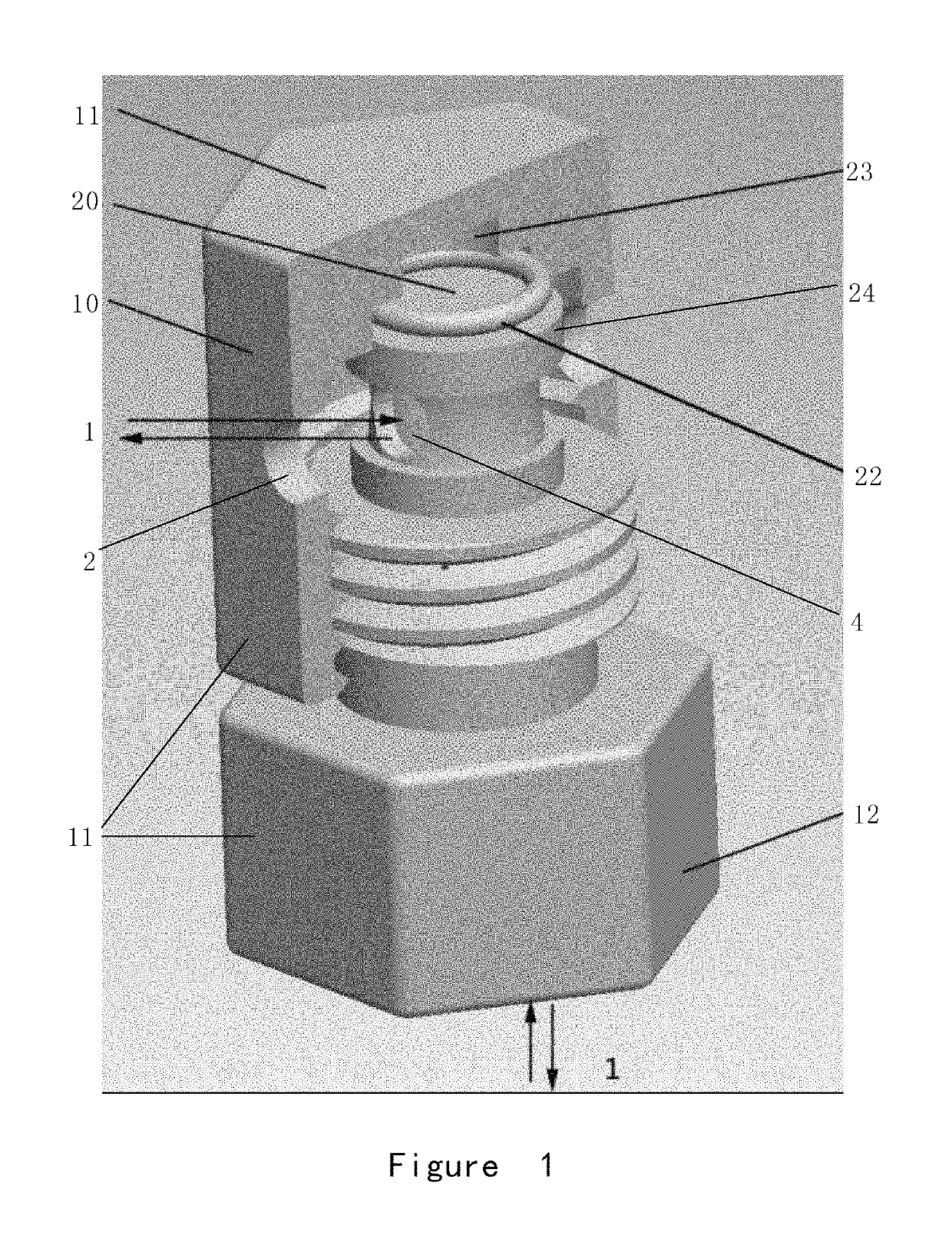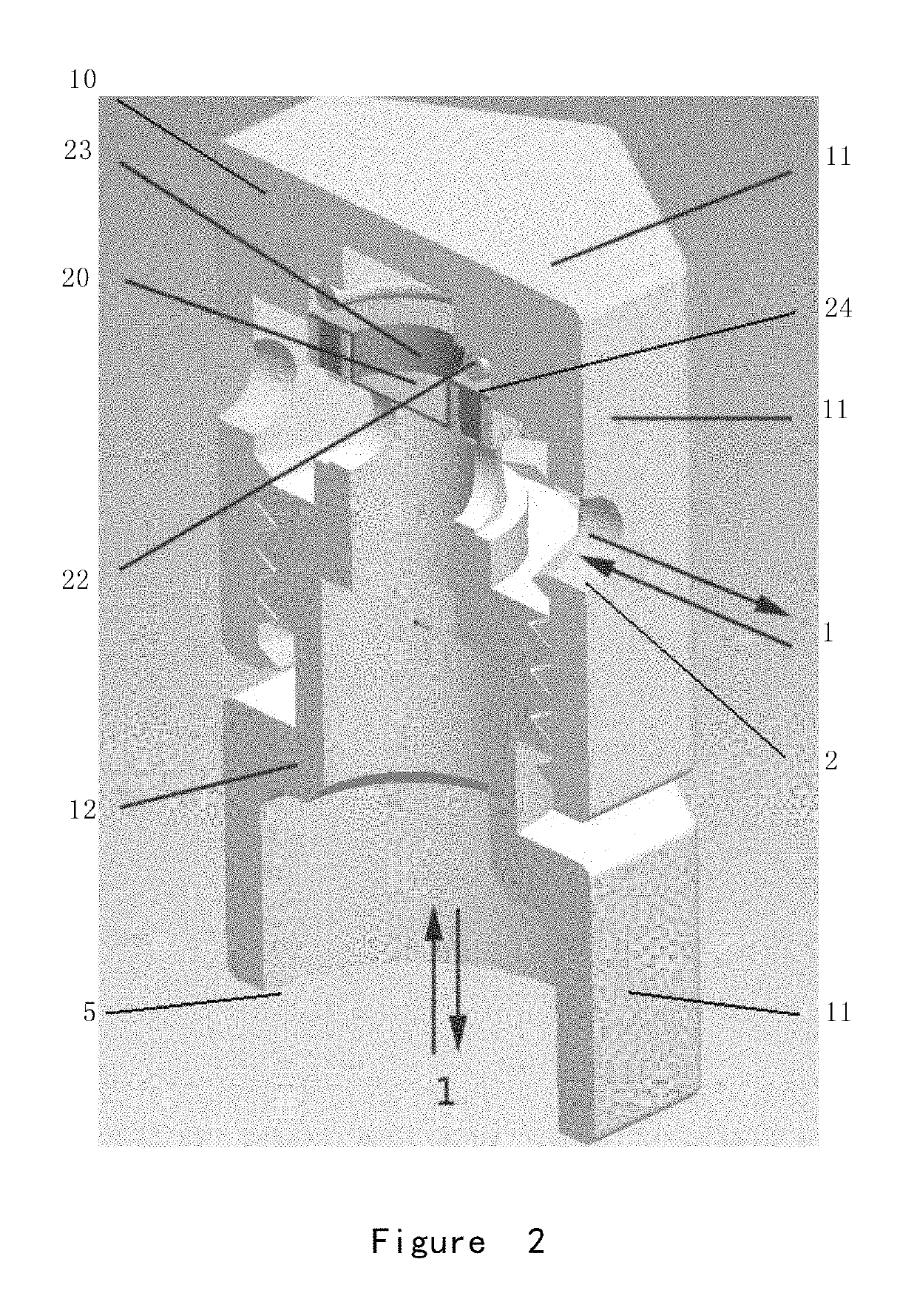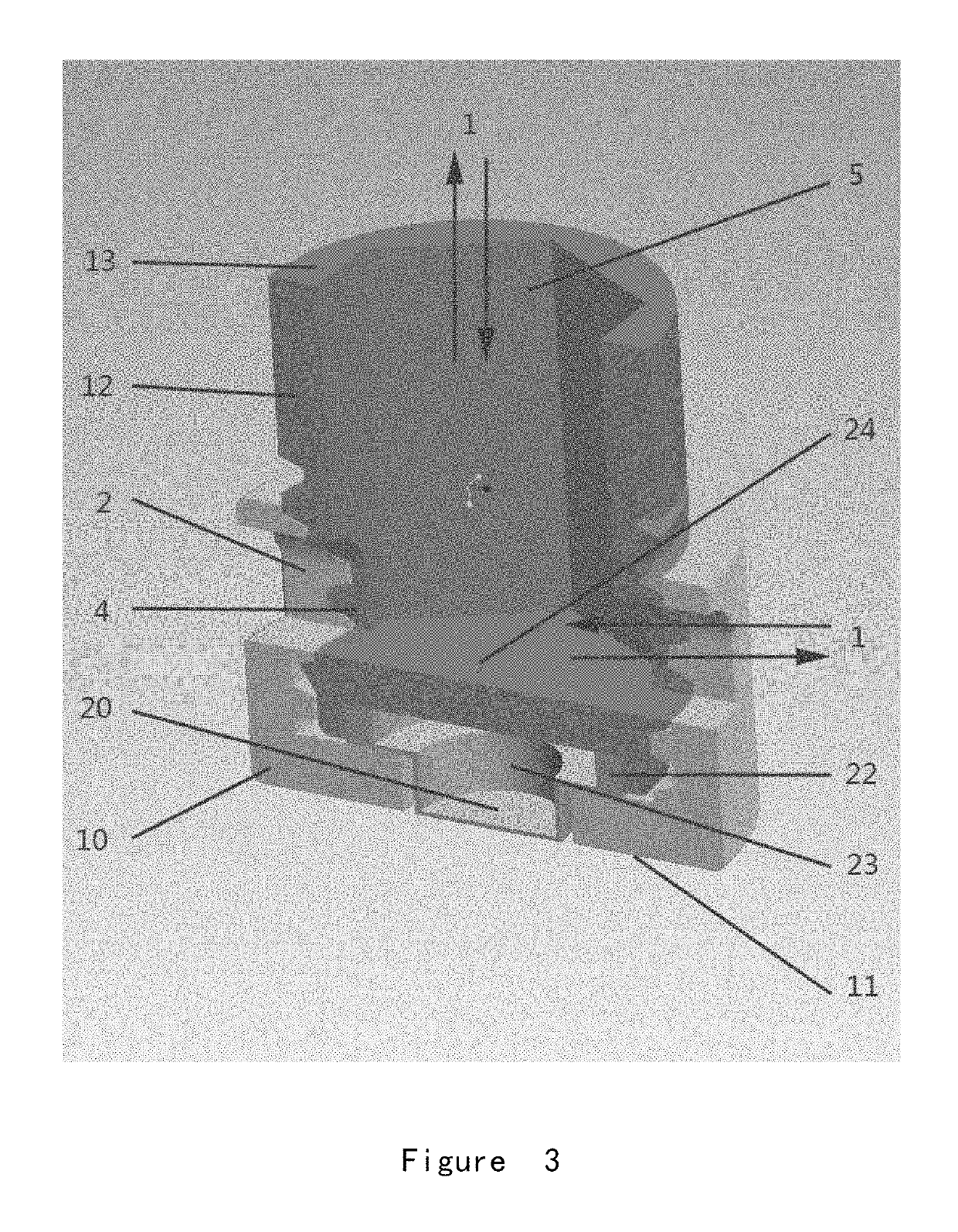Biological sample vitrification carrier and usage thereof
a biological sample and vitrification carrier technology, applied in the field of biological sample freezing devices, can solve the problems of low quality after recovery, decreased cooling rate of desired freezing material, risk of cross contamination, etc., and achieve high vitrification efficiency, fast freezing rate, and reduced potential toxic risks of coolant liquid to biological samples
- Summary
- Abstract
- Description
- Claims
- Application Information
AI Technical Summary
Benefits of technology
Problems solved by technology
Method used
Image
Examples
example 1
Test for Sealing Performance
[0101]50 sets of sealed vitrification carrier 1 (FIG. 1) and carrier 3 (FIG. 3) are taken respectively, sterilized and placed into liquid nitrogen for 1 day, 1 week, 30 days, 60 days and 90 days. Then, the carriers were taken out from the liquid nitrogen and placed into 37° C. water immediately for 10 mins. The carriers were then placed on filter paper for a few seconds. The sealing caps were removed and clean filter paper was used for cleaning the placing platform. The filter paper was observed under microscope for water stain. Results are shown in Table 1:
[0102]
TABLE 1Items for sealingDays in liquid nigtrogen (day)Performance17306090Carrier 1The number of1010101010tested setsResults ofNoneNoneNoneNoneNonewater staintestCarrier 3The number of1010101010tested setsResults ofNoneNoneNoneNoneNonewater staintest
[0103]The results showed that the carrier can be 100% sealed.
example 2
Survival Rate of Eggs or Embryos
[0104]1. Test Subject
[0105]Experimental animals are 80 female (9-week-old, 2933 g / mice) Kunming Mice of clean grade and 20 male (9-week-old, 38-45 g / mice) mice (purchased from Shanghai Institute of Biological Products). The animals were exposed to 12-hour-circle of light and darkness.
[0106]2. Experimental Method:
[0107]1) Oocytes collection: sexually matured female Kunming mice were treated with ovulation induction and then sacrificed by cervical dislocation. The oviduct was separated, and oocytes with complete zona pellucida and good intracellular substance refractivity were collected (no damage in zona pellucida or cell membrane, clear periviteline space, no cell plasma leaking or egg cell atrophy, normal size, and good intracellular substance refractivity).
[0108]2) Sperm collection: seminal fluid was obtained by sacrificing healthy male mice through breaking the spine on the day of fertilization.
[0109]3) In vitro fertilization: the seminal fluid was...
PUM
 Login to View More
Login to View More Abstract
Description
Claims
Application Information
 Login to View More
Login to View More - R&D
- Intellectual Property
- Life Sciences
- Materials
- Tech Scout
- Unparalleled Data Quality
- Higher Quality Content
- 60% Fewer Hallucinations
Browse by: Latest US Patents, China's latest patents, Technical Efficacy Thesaurus, Application Domain, Technology Topic, Popular Technical Reports.
© 2025 PatSnap. All rights reserved.Legal|Privacy policy|Modern Slavery Act Transparency Statement|Sitemap|About US| Contact US: help@patsnap.com



